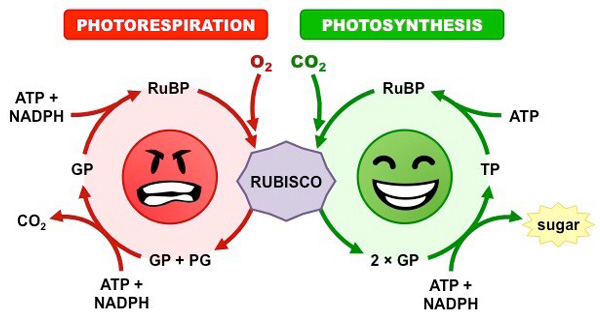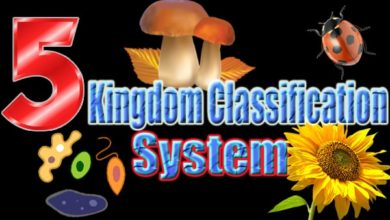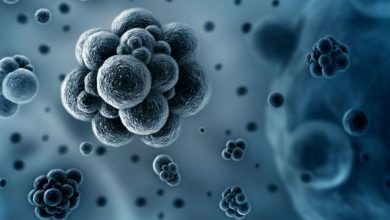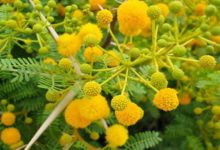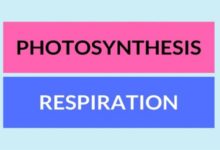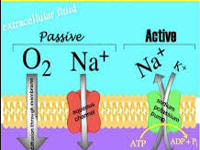Photorespiration and its Consequence
Respiratory activity which occurs in plants during the daytime is called photorespiration. So, it is a light-dependent process. In this process, CO2 is released and oxygen is absorbed. This oxygen is absorbed from the early reaction of photosynthesis. This oxygen is not used for the production of energy such as ATP.
The enzyme “ribulose bisphosphate carboxylase” or Oxygenase (rubisco) fixes the oxygen in this process. While in the Calvin cycle rubisco fixes CO2. So, photorespiration lowers the overall rate of carbon dioxide fixation and plant growth.
Steps take place during photo-phosphorylation
Ribulose 1, 5 bisphosphate (RuBP) reacts with oxygen in photo-phosphorylation. The following steps take place during photo-phosphorylation:
- The RuBP reacts with oxygen. This step is controlled by the enzyme rubisco. Rubisco is the most abundant protein in the world. It comprises about 20% of every plant leaf. The rubisco is carboxylase as well as Oxygenase:
- Rubisco as Carboxylase: When rubisco acts as carboxylase, it adds carbon dioxide to RuBP. The RuBP acts as an acceptor molecule.
- Rubisco as Oxygenase: When rubisco acts as an oxygenase, it adds oxygen to RuBP.
Both these reactions are complete with each other. The RuBP reacts with oxygen to form a two-carbon compound called glycolate.
RuBP + O2 ——–> Glycolate
- This glycolate diffuses into the peroxisome. It is a membranous bound organelle. The glycolate is converted into glycine in the peroxisome through a series of reactions.
Glycolate ——–> Glycine
- Glycine is a simple amino acid. It soon diffused into mitochondria. In mitochondria; two molecules of glycine are converted into serine and a molecule of carbon dioxide is also formed.
2 Glycine ———> Serine + CO2
The pathway in which RuBP is converted into serine is called photorespiration. The process of photorespiration uses ATP and NADPH, just like the Calvin Benson cycle. These ATP and NADPH are produced during light reactions. In fact, photorespiration is the reverse of the Calvin cycle. During photorespiration, CO2 is produced and does not fix to form carbohydrates. Photorespiration reduces the number of carbohydrates by 25% in most plants.
Functions of Rubisco
Rubisco can act both as an oxygenase and carboxylase. The relative concentration of carbon dioxide and oxygen in the leaf determines whether rubisco has to act as carboxylase or oxygenase.
- When more oxygen is present, it acts as an oxygenase and photorespiration starts. The stomata are closed during hot and dry days to prevent the loss of water. So, these stomata do not allow oxygen to go outside and the level of oxygen rises. The CO2 is consumed. So the level of CO2 In this way, the rubisco acts as an oxygenase.
- Where more CO2 is present, it acts as a carboxylase, and the Calvin cycle starts.
Consequence or Importance of Photorespiration
Interestingly, photorespiration reduces the photosynthetic process. Photorespiration is not essential for plants. Many plants can grow normally without photorespiration. It is observed that when photo-respiration is inhibited chemically, the plant can still grow. Then, the number of oxygen increased and photo-respiration started.
